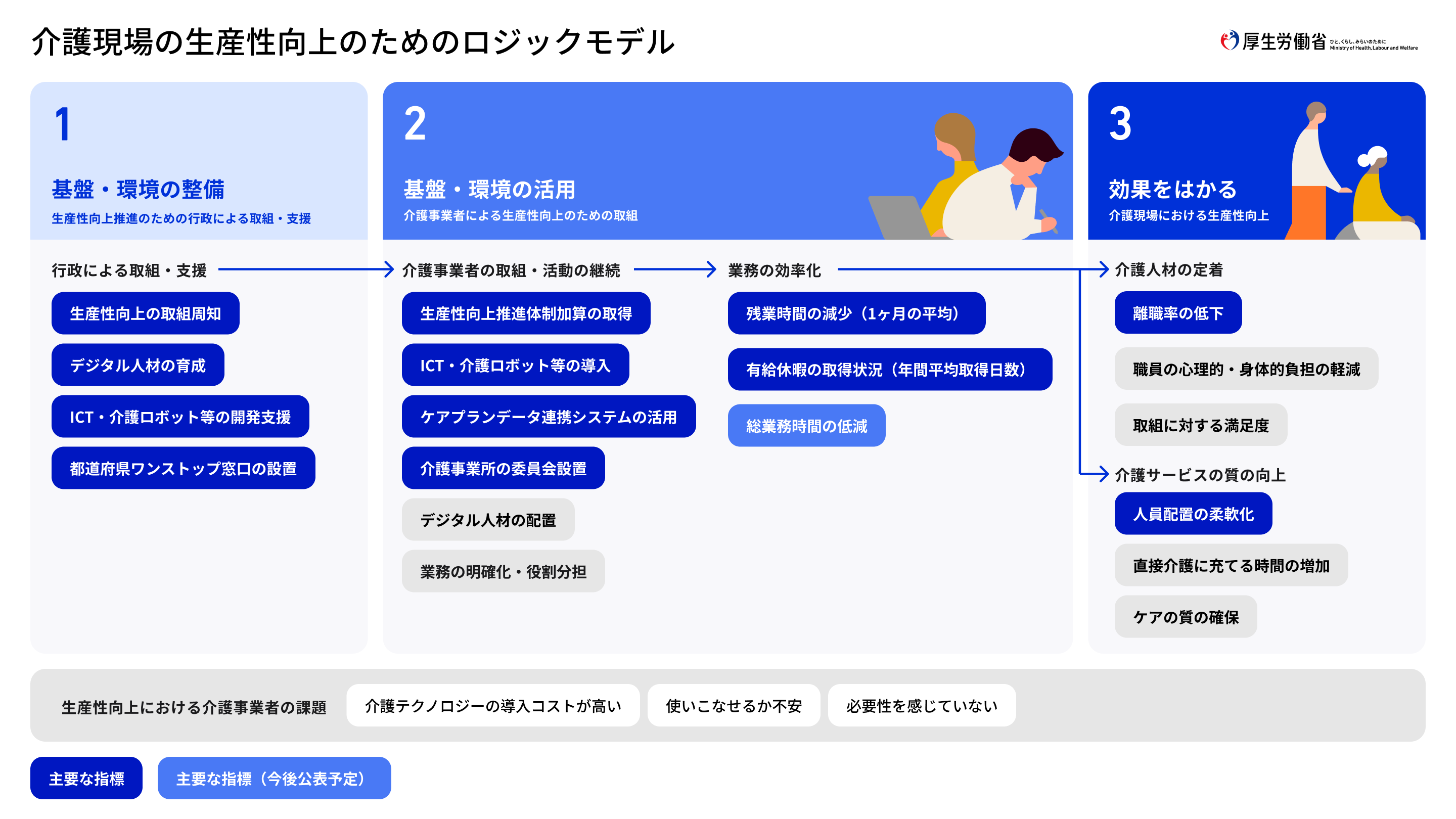Field Productivity Dashboard
- Last Updated:
Notice
- October 17, 2025 Updated the data.
Table of Contents
- Policies and guidelines for improving productivity in long-term care settings
- Major Indicators for Improving Productivity in Long-term Care Settings
2.1. List of major indices in
2. 2. Status of productivity improvement premiums by major facility - Look at by prefecture level
- Points to consider
1. Policies and guidelines for improving the productivity of long-term care workplaces
Background:
While the demand for care services is expected to increase further, the working-age population is expected to decline rapidly, and it is estimated that about 570,000 new care workers will be needed in 2040.

In order to respond to these issues, Ministry of Health, Labor and Welfare is implementing a variety of comprehensive measures, such as improving the treatment of long-term care workers, including wage increases, improving the work environment, including reducing the burden of work by increasing productivity, and developing environments in which foreign long-term care workers can play an active role.
Of these, efforts to improve productivity at long-term care sites are defined as "enhancing the value of long-term care." The aim is to improve the quality of long-term care services and to retain and secure human resources through human resource development and efficiency improvement.
A Logic Model for Improving Productivity at Nursing Care Sites

In order to improve the productivity of long-term care providers nationwide and in local communities as a whole, it is important for the national government to provide the necessary support, for local governments to take the lead in efforts to improve the productivity of local long-term care providers, and for these efforts to be effective.
Ultimately, we aim to achieve sustainable long-term care services by reducing the workload of long-term care staff and improving the quality of long-term care services.
For more information, please visit:
2. Major indicators for improving productivity at long-term care facilities
2.1 List of Key Indicators
We extract particularly important indicators in the logic model for improving productivity at nursing care sites, and collect and visualize the data. By monitoring the status of efforts to improve productivity, we can examine improvement methods on a regular basis.
For a detailed explanation of each item, see Data Definition .
2.2 Status of Productivity Improvement Premiums by Major Facility
From the perspective of promoting efforts to improve productivity at nursing care facilities, the Productivity Improvement Promotion System Premium is a premium to support the continued use of technology after the introduction of home care robot, ICT, etc. The status of obtaining the premium (I) and the premium (II) at major nursing care facilities such as Intensive Care Home for the Elderly, Long-Term Care Health Facilities, and Specified long-term care facilities is indicated respectively.
3. By prefecture
Regarding the continuous activities of long-term care providers, the status of introduction of ICT, home care robot, etc. and the status of introduction of care plan data linkage system, etc. are displayed by prefecture.
4. Important Points
Data:
Defining Data
Refresh Data
We plan to update the various dashboard numbers on a regular basis.
True or false information
For data-related true or false information, please refer to True or False Information: Dashboard on Improving Productivity in Nursing Care.
Opinions and Requests
Care Service Efficiency and Productivity Improvement Promotion Office, Elderly Support Division, Ministry of Health, Labor and Welfare Health and Welfare Bureau for the Elderly
Tel: 03-5253-1111 (ext. 3875)